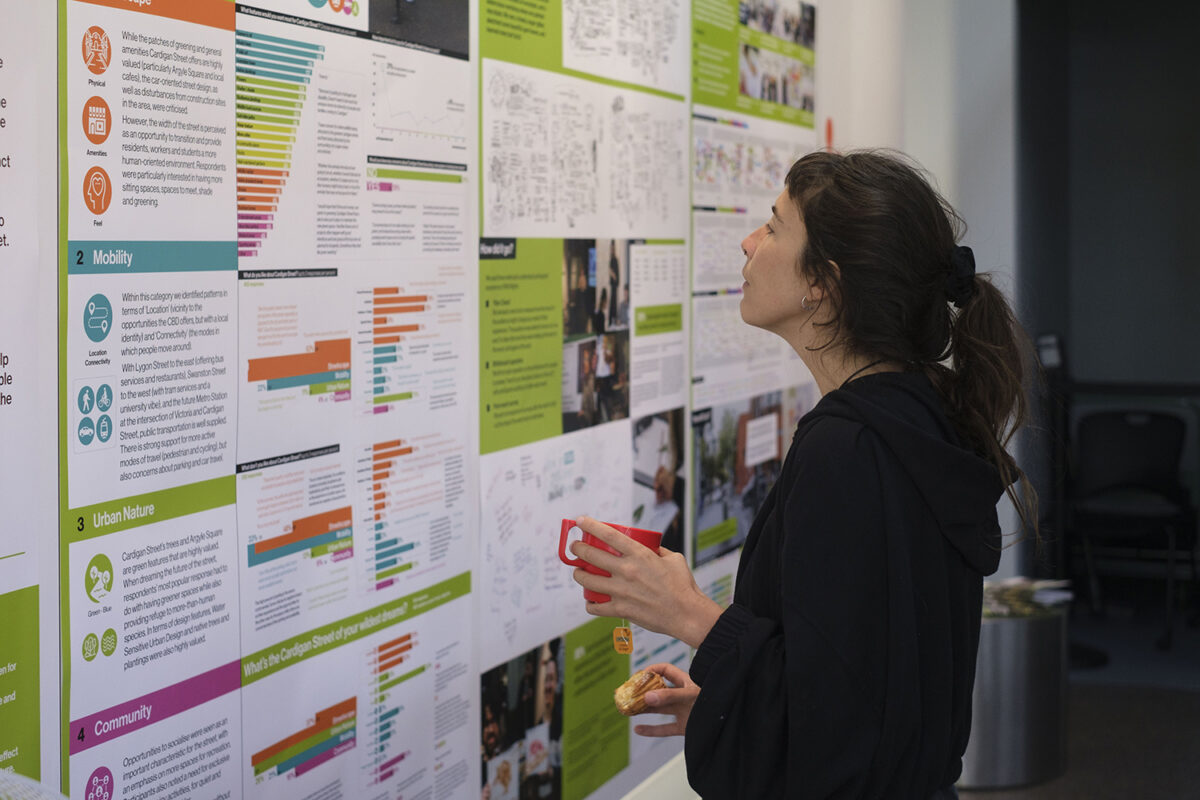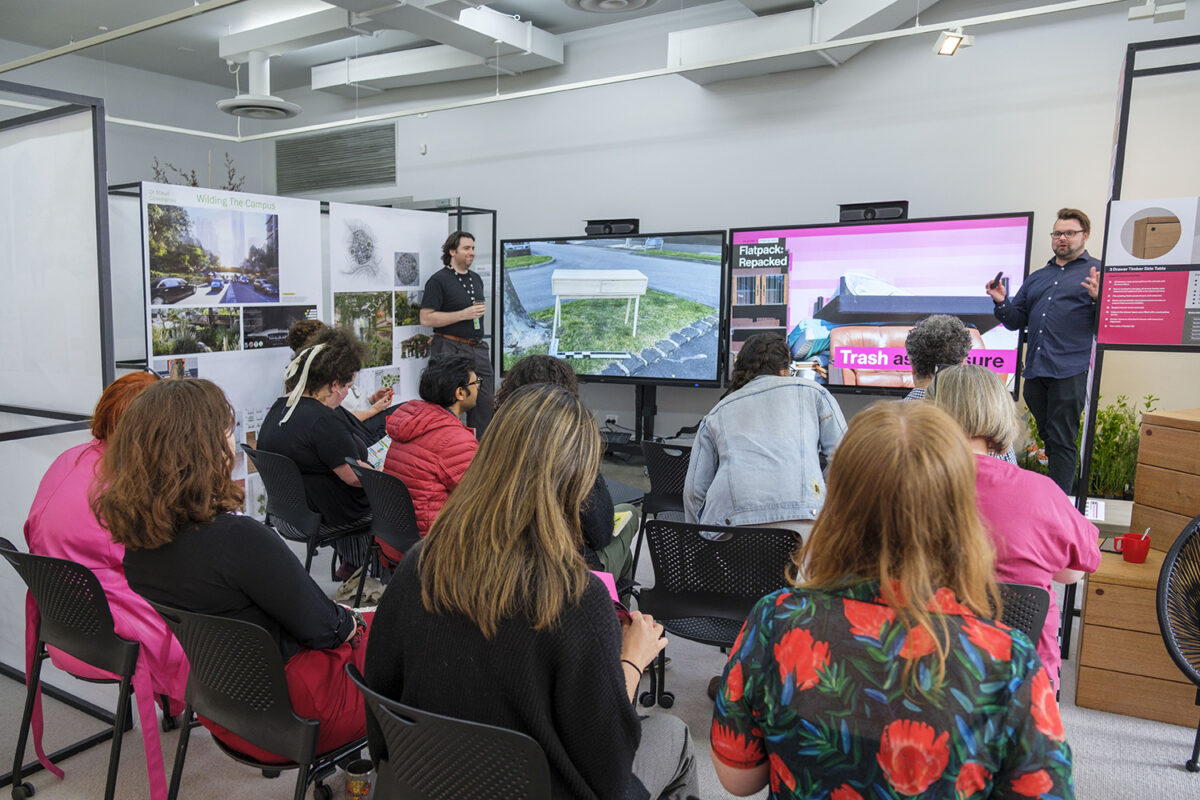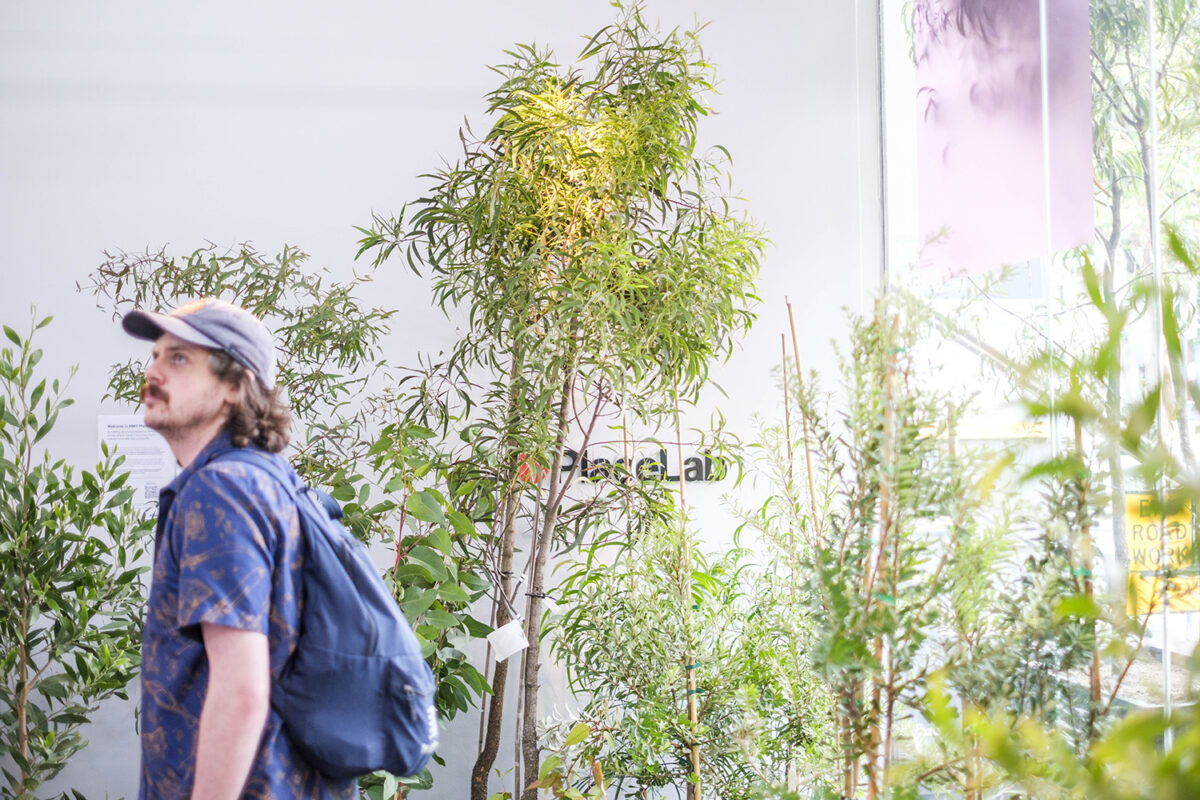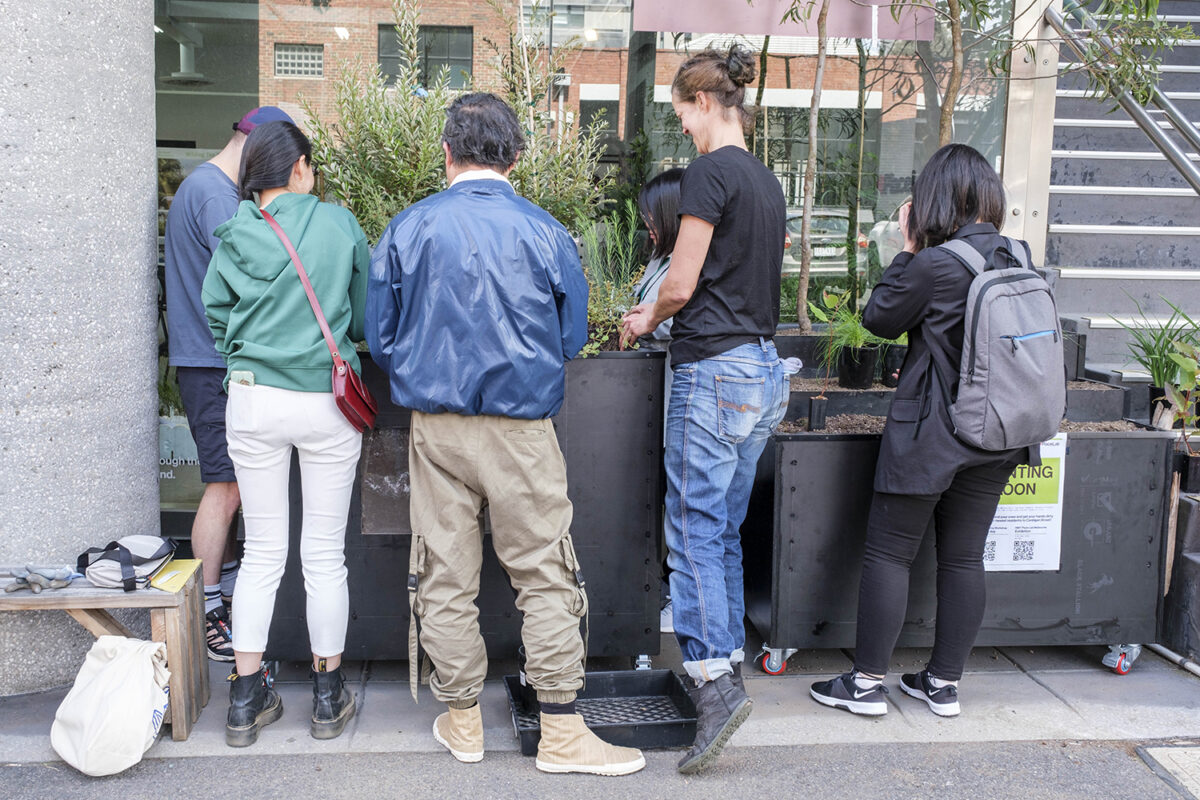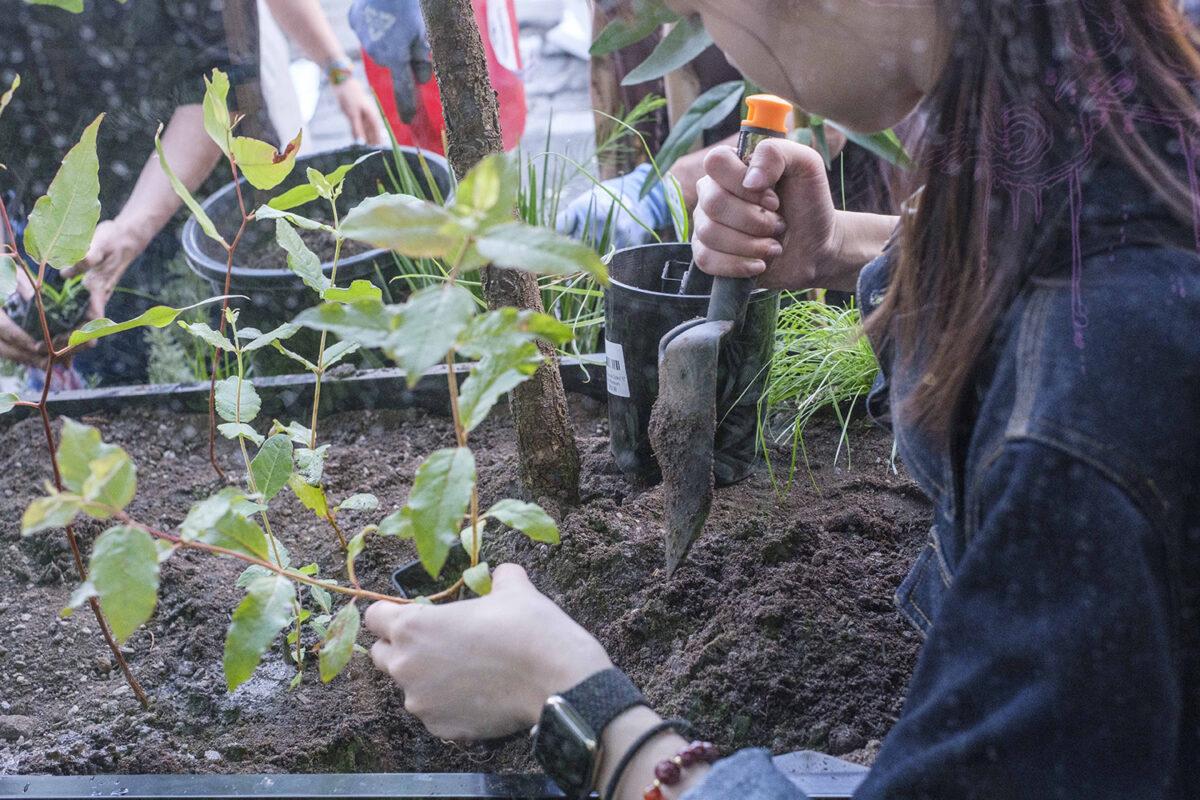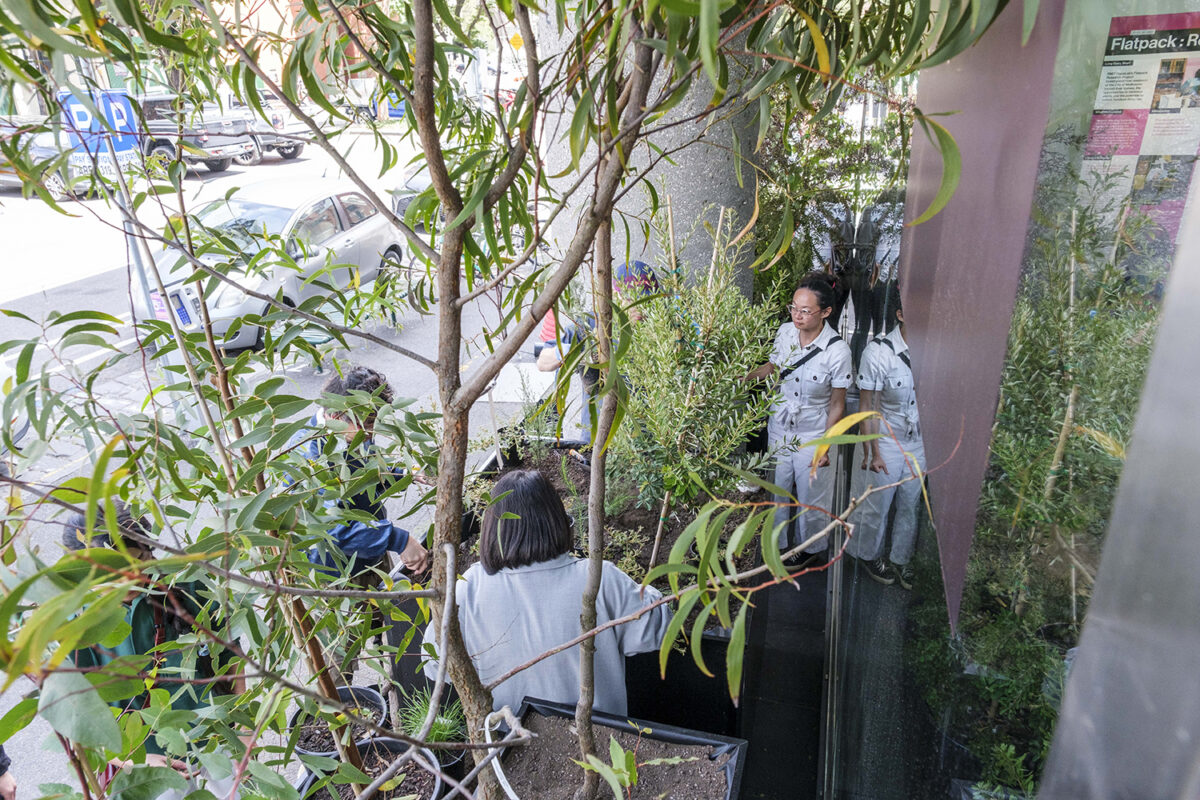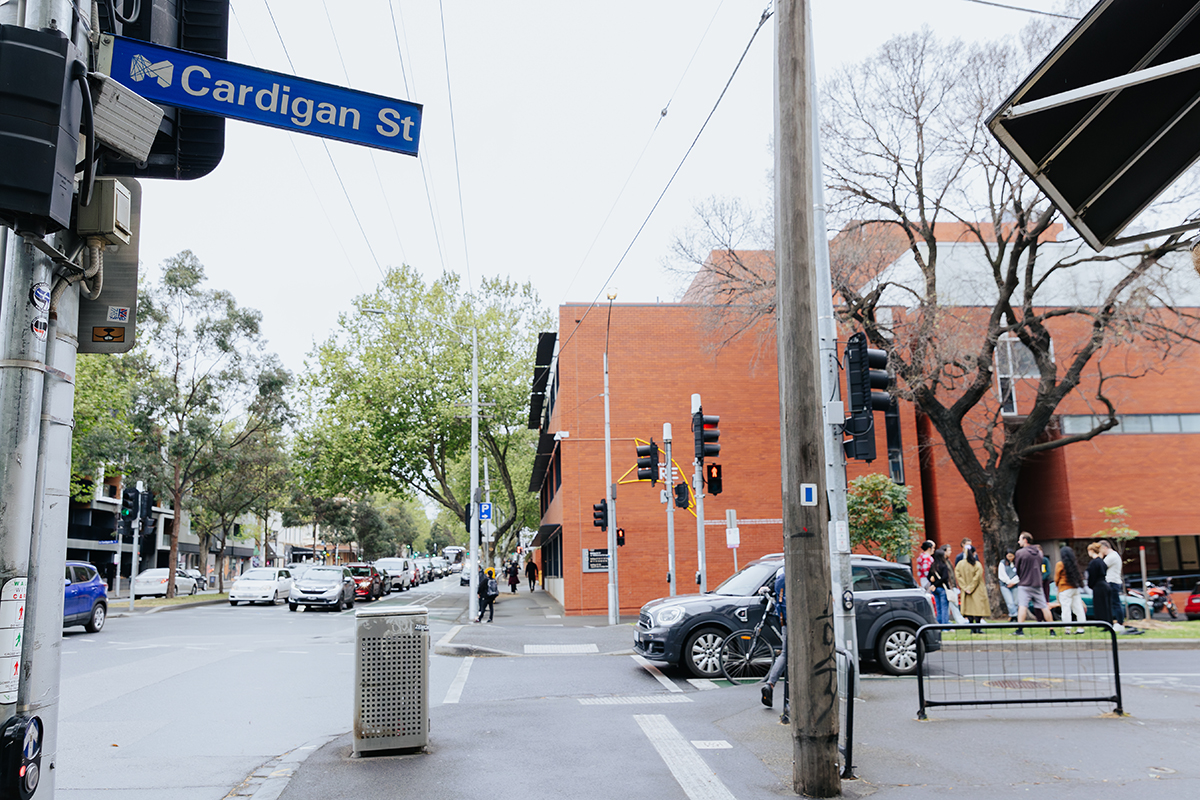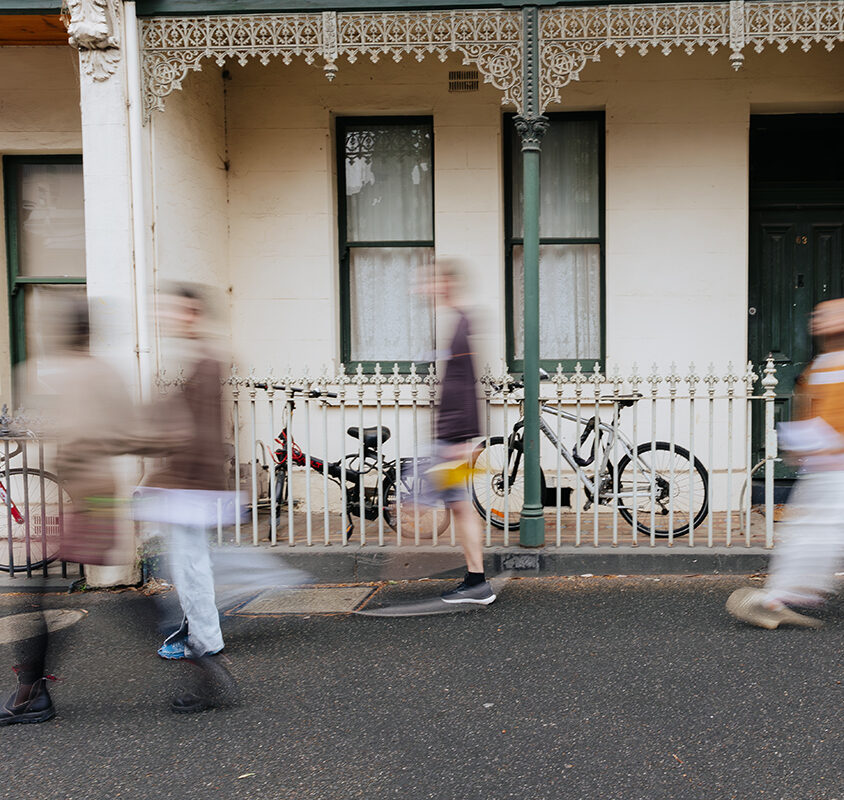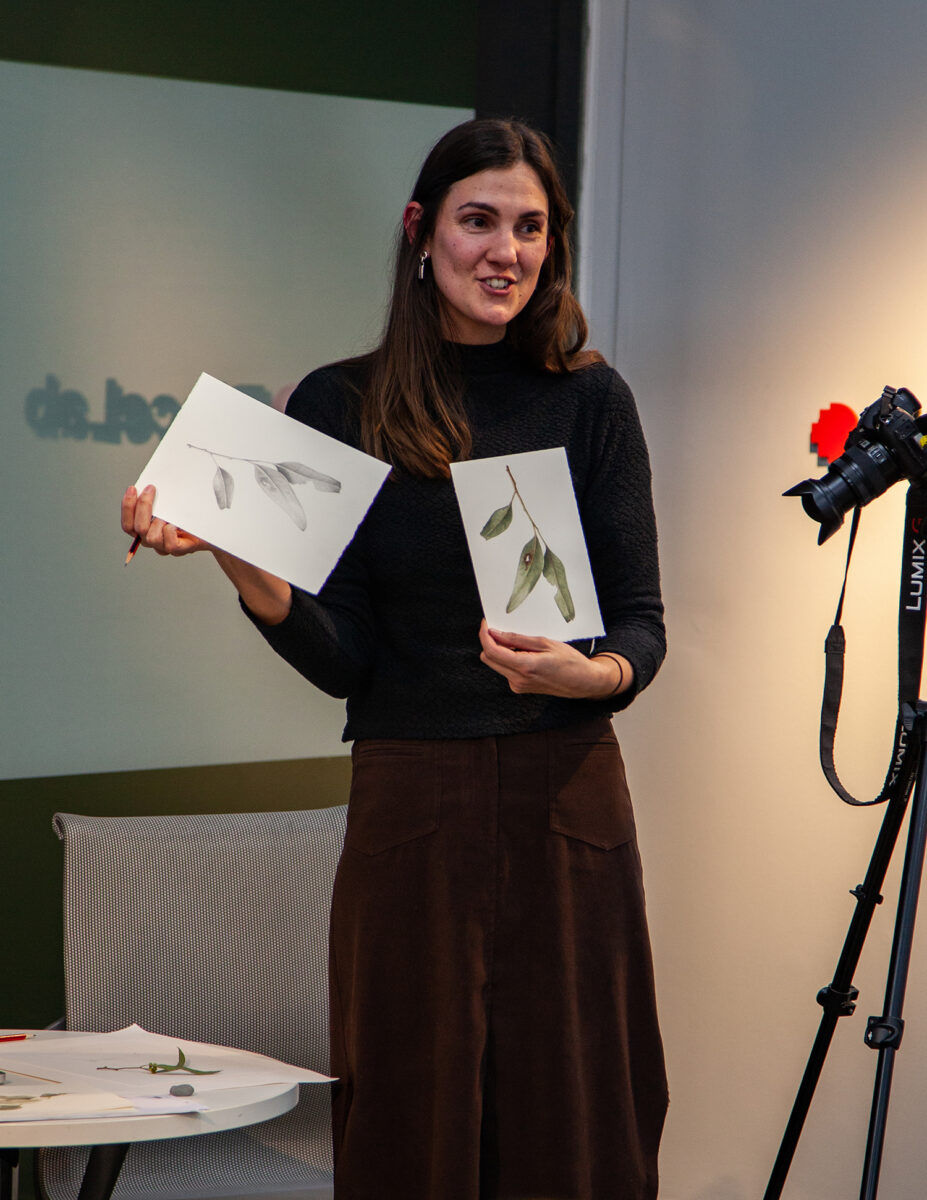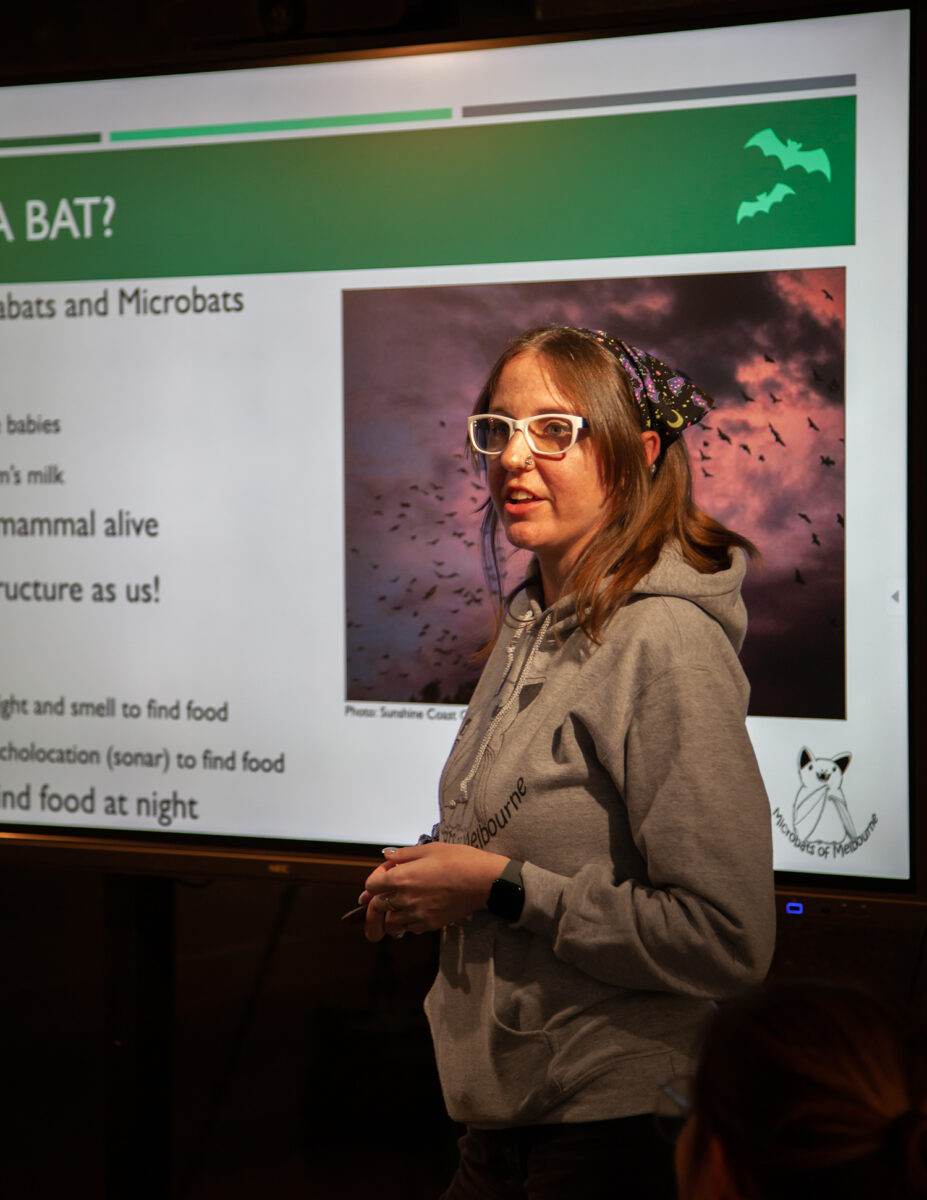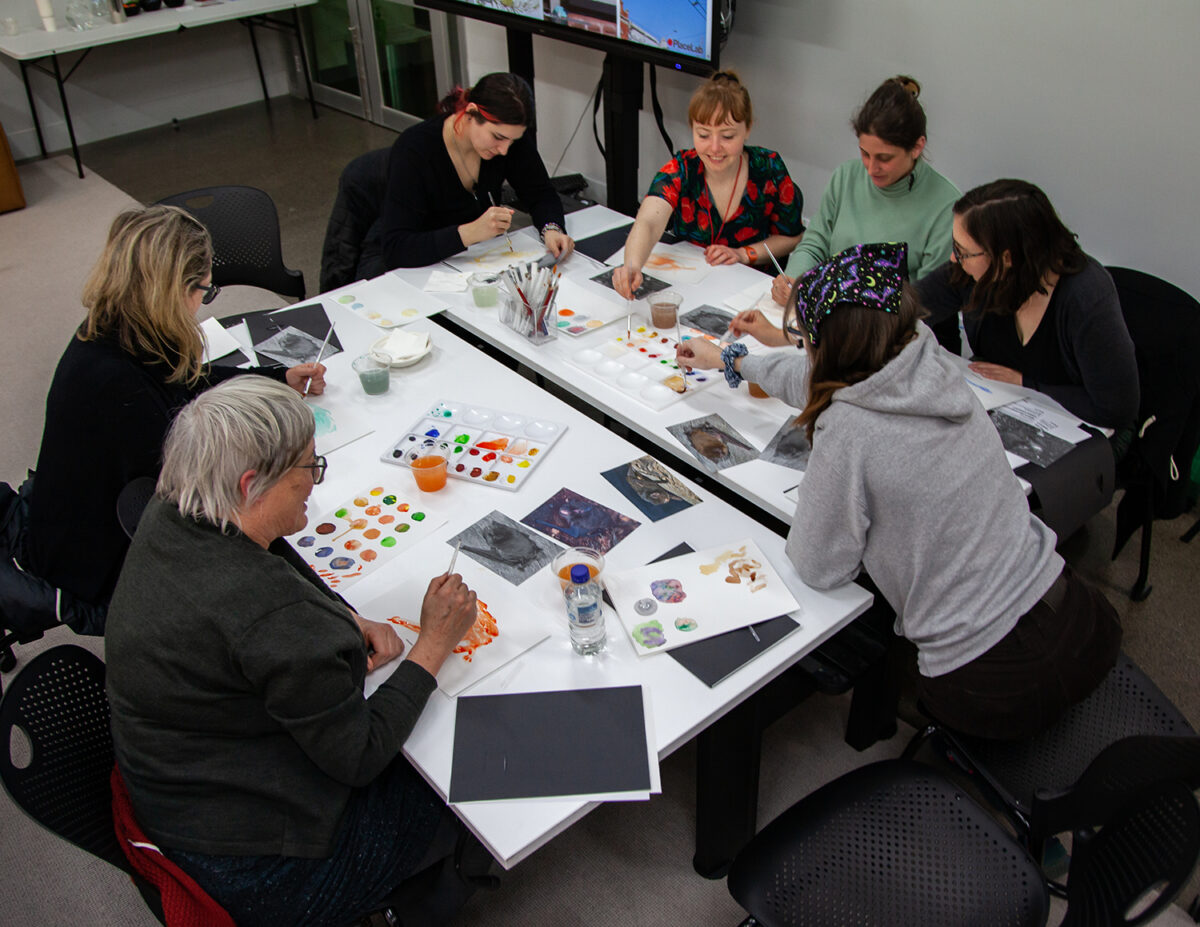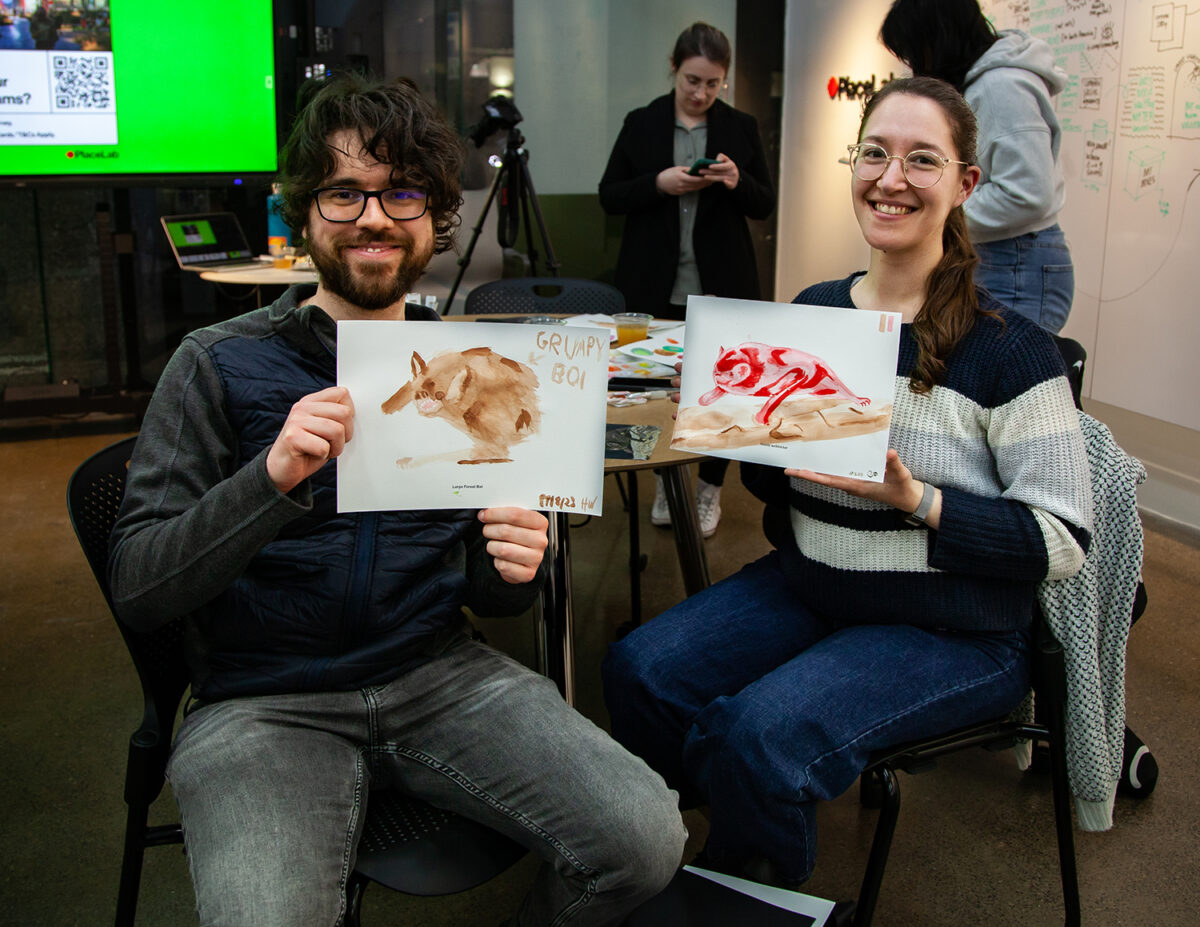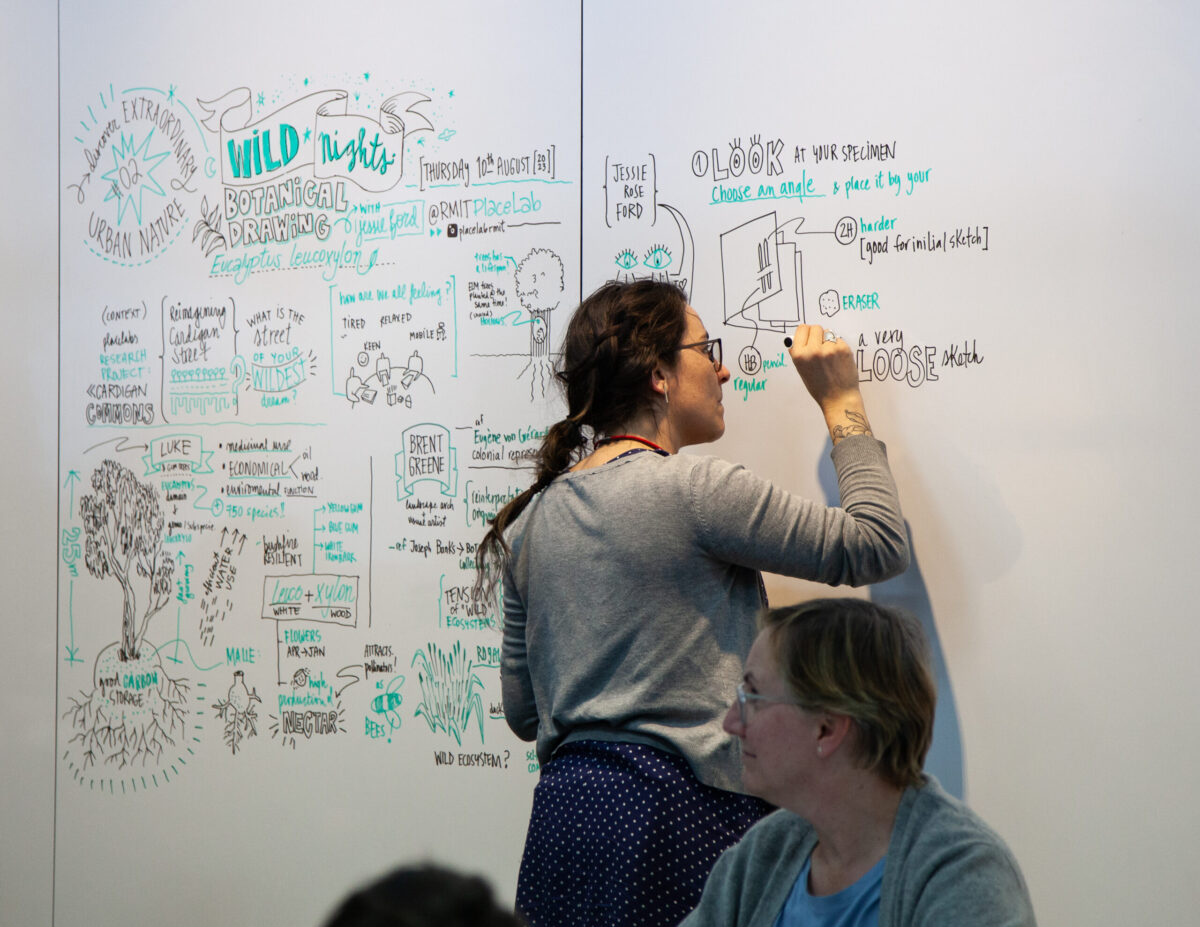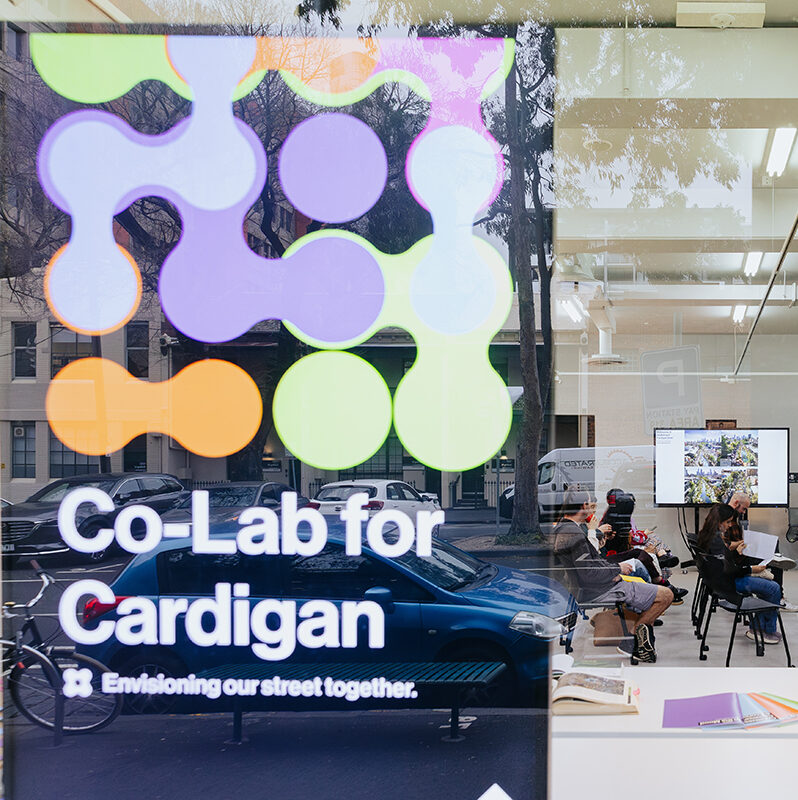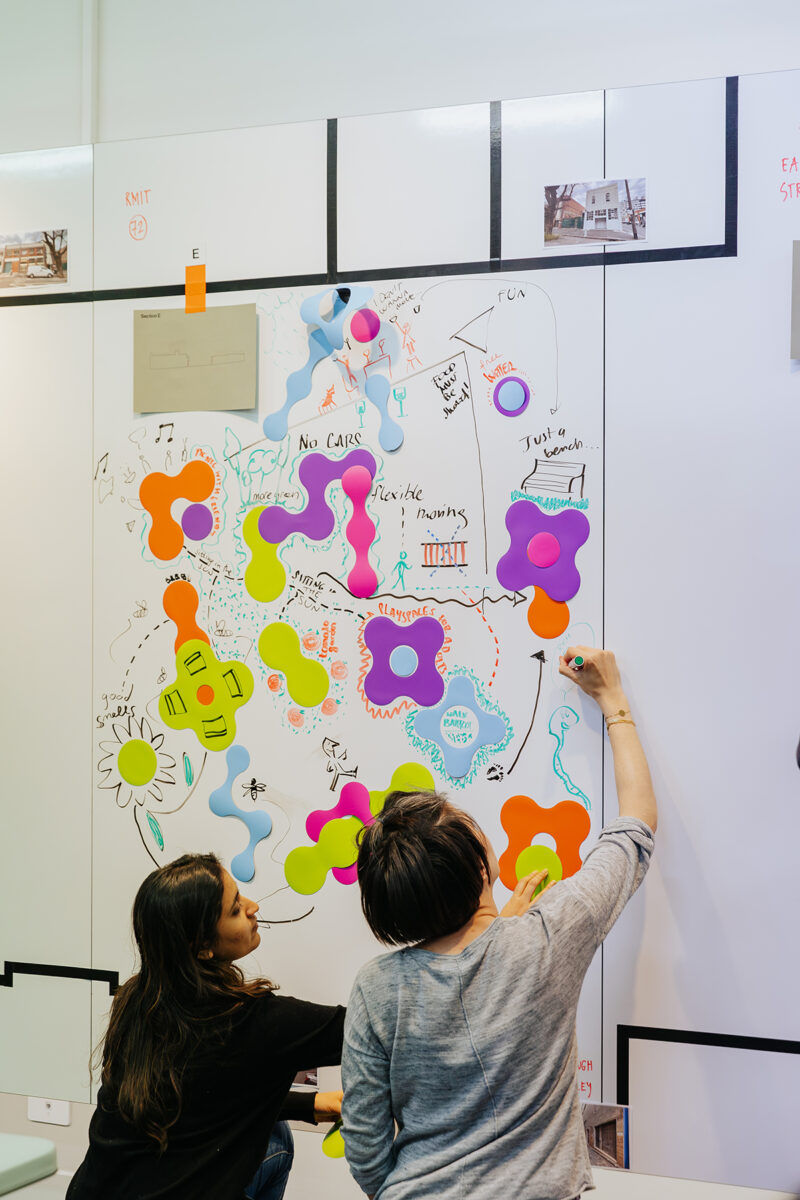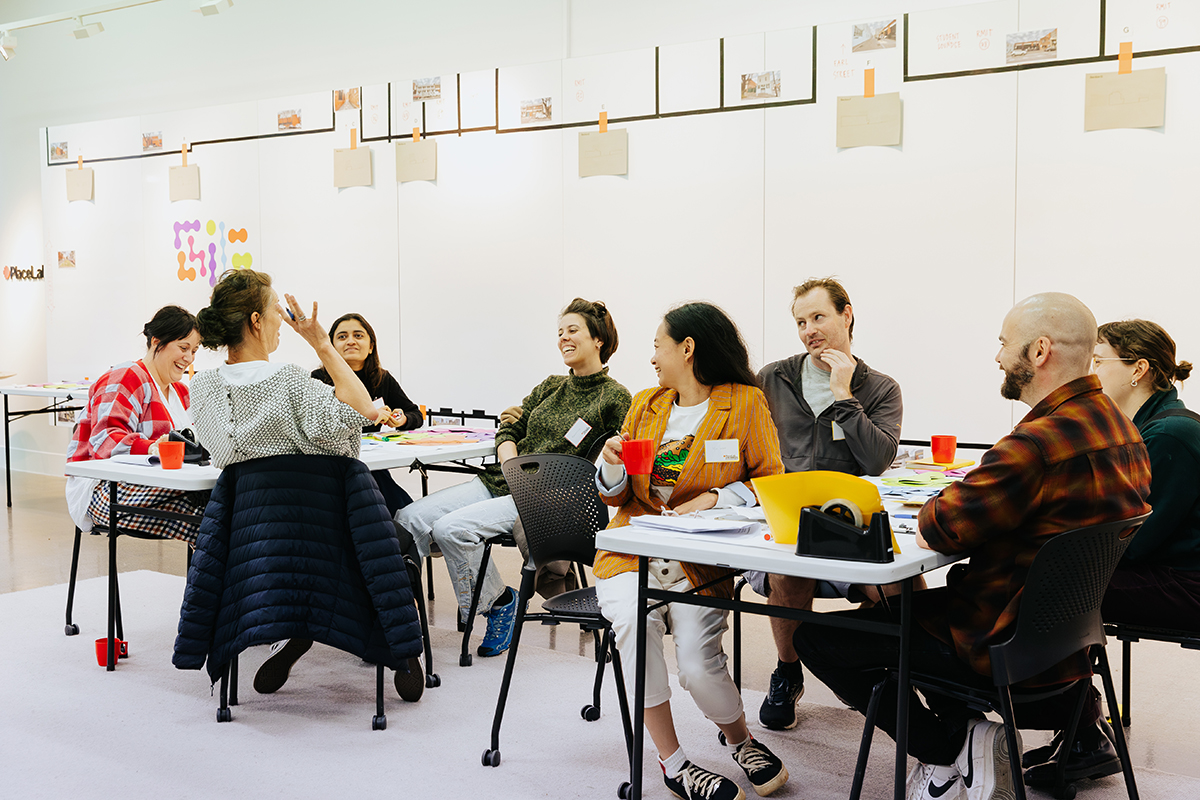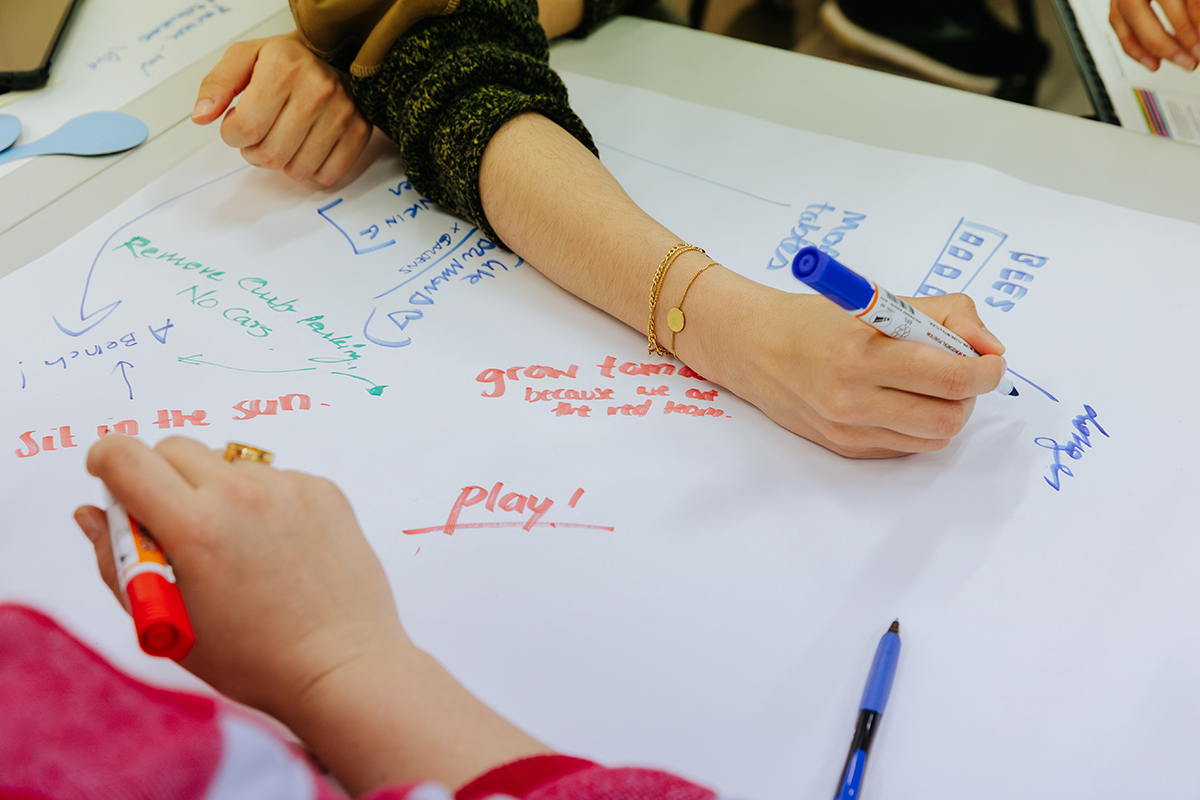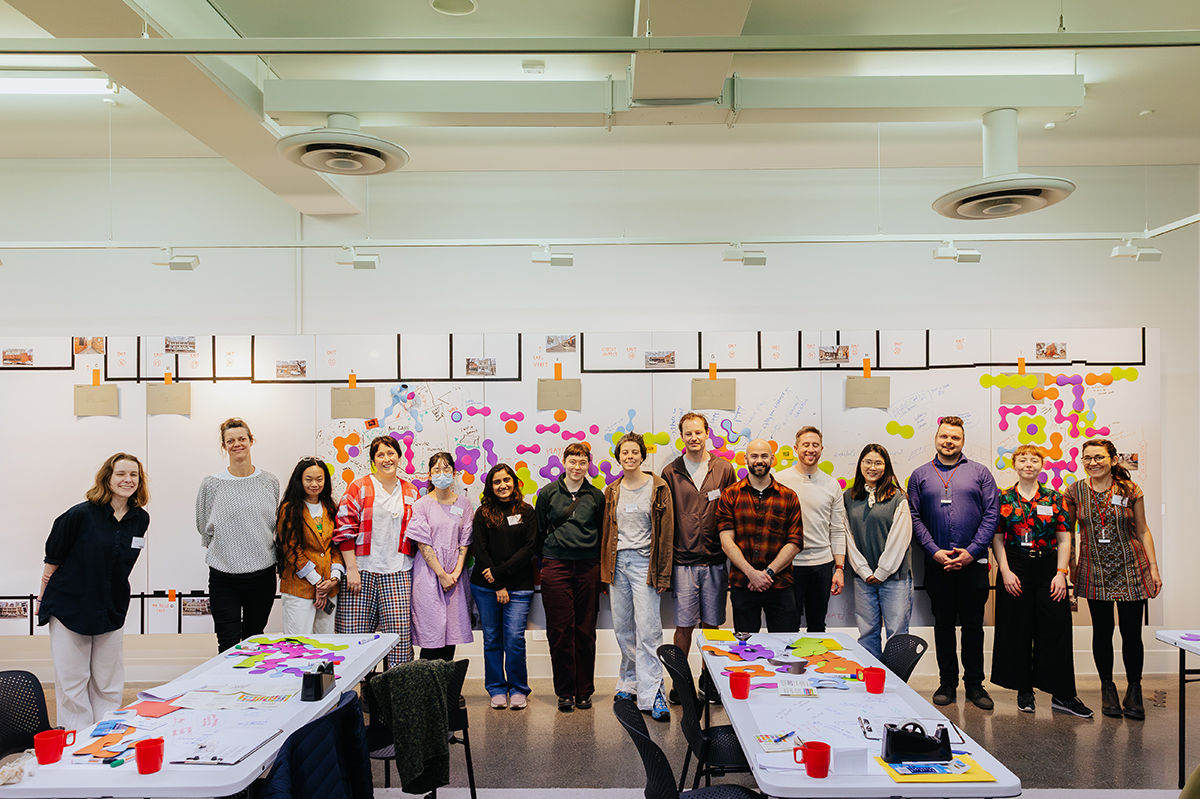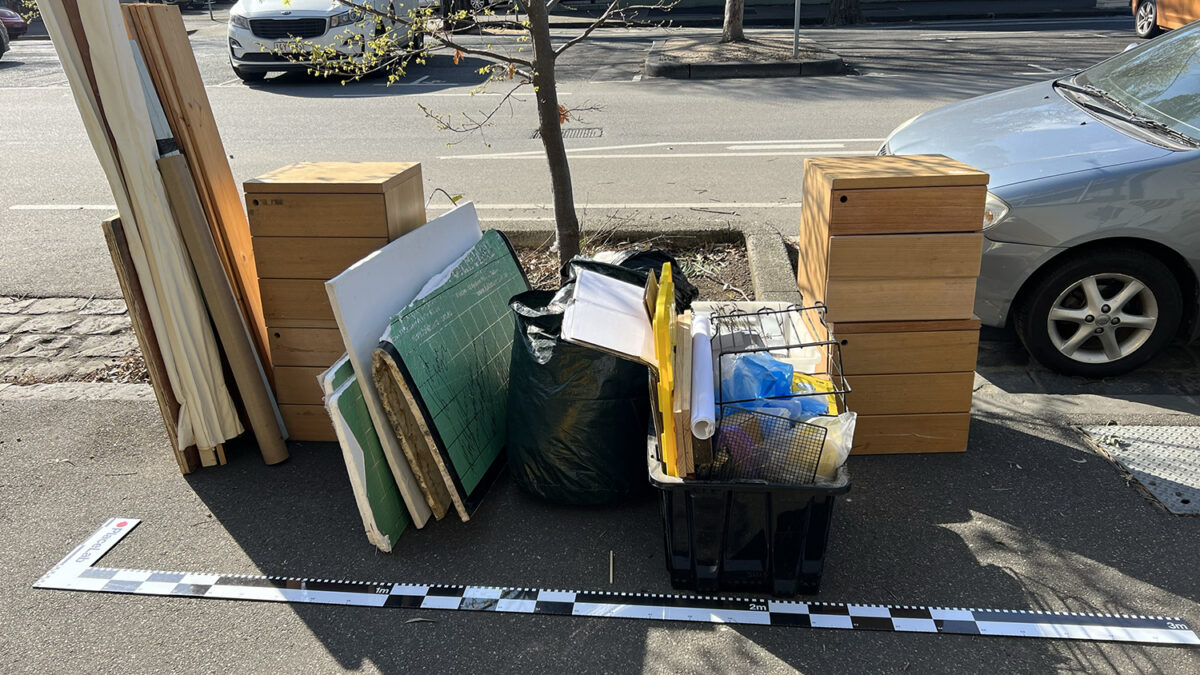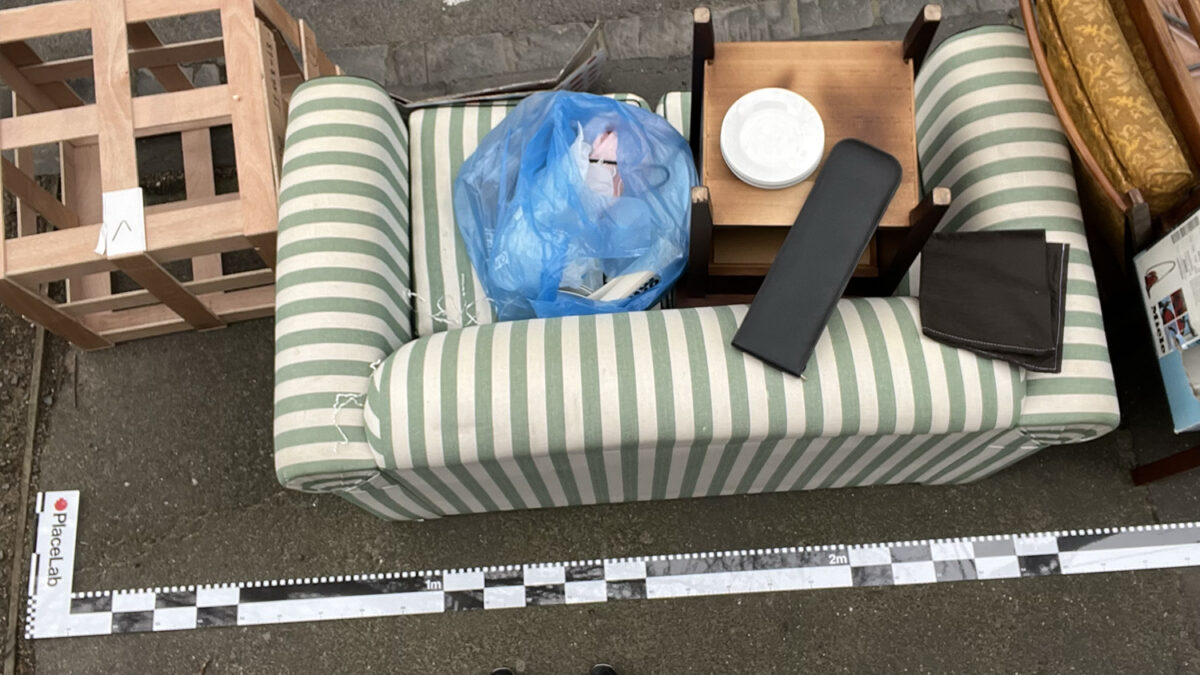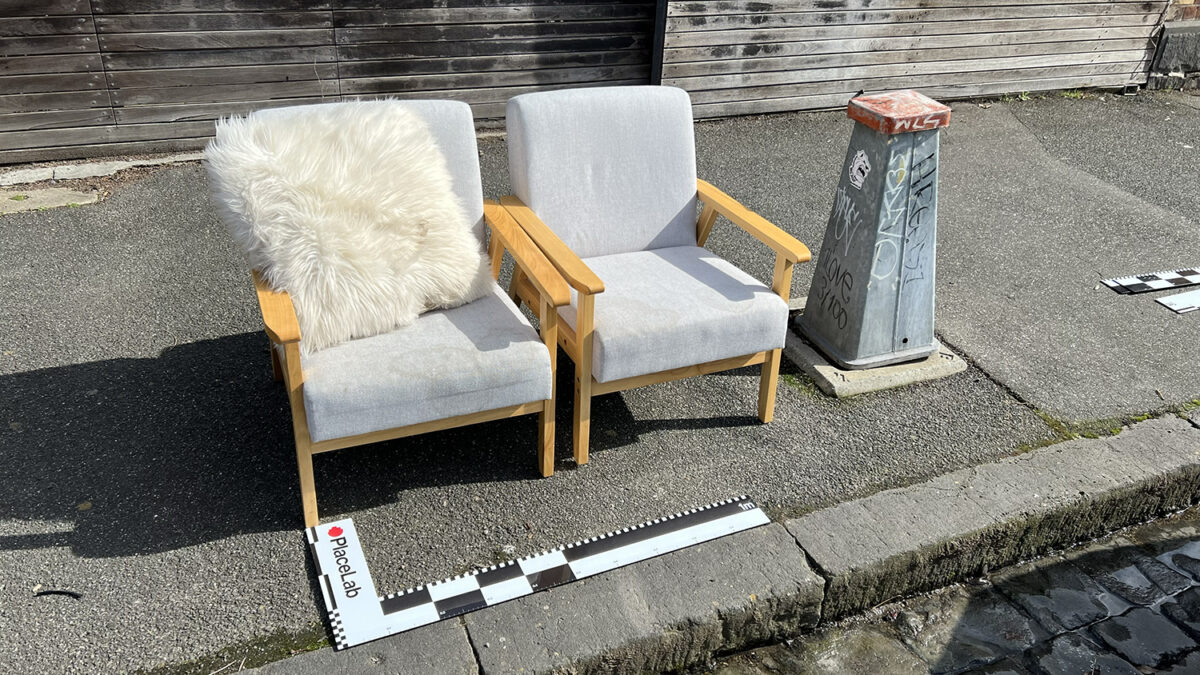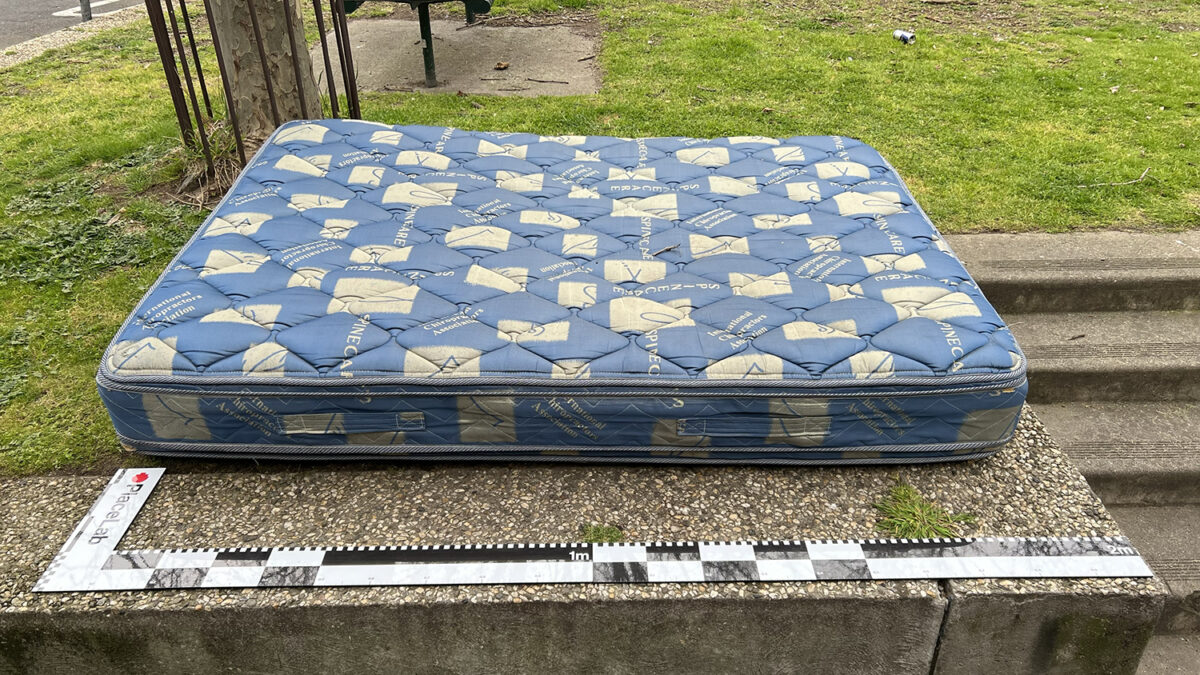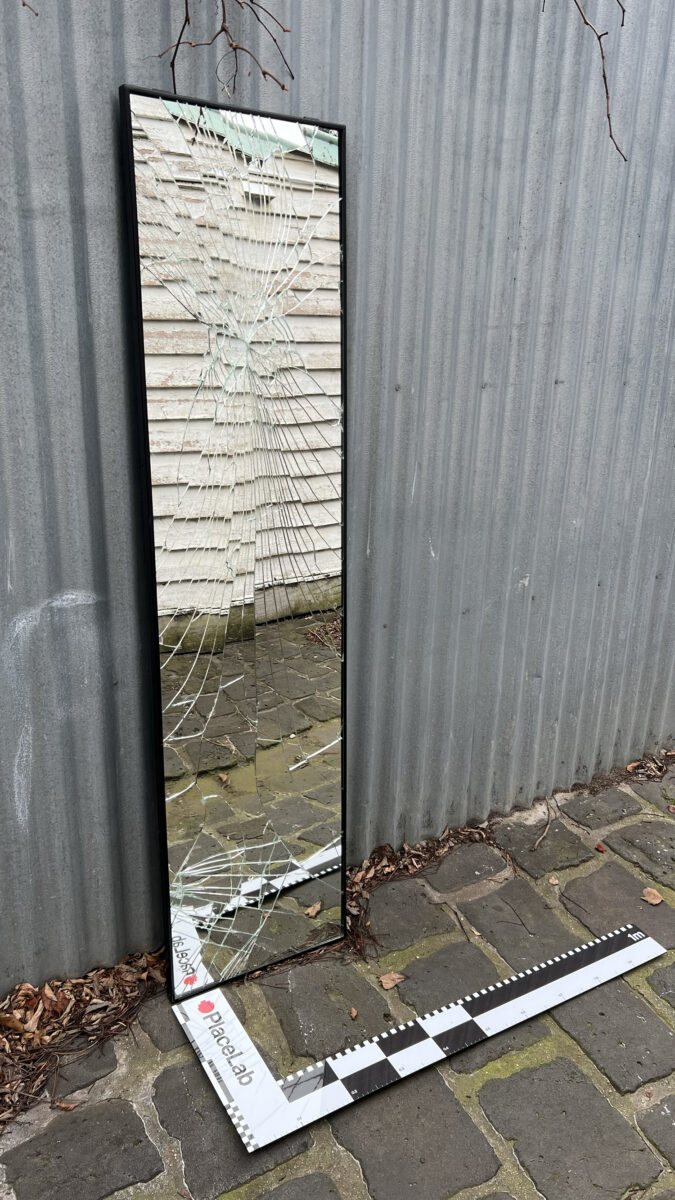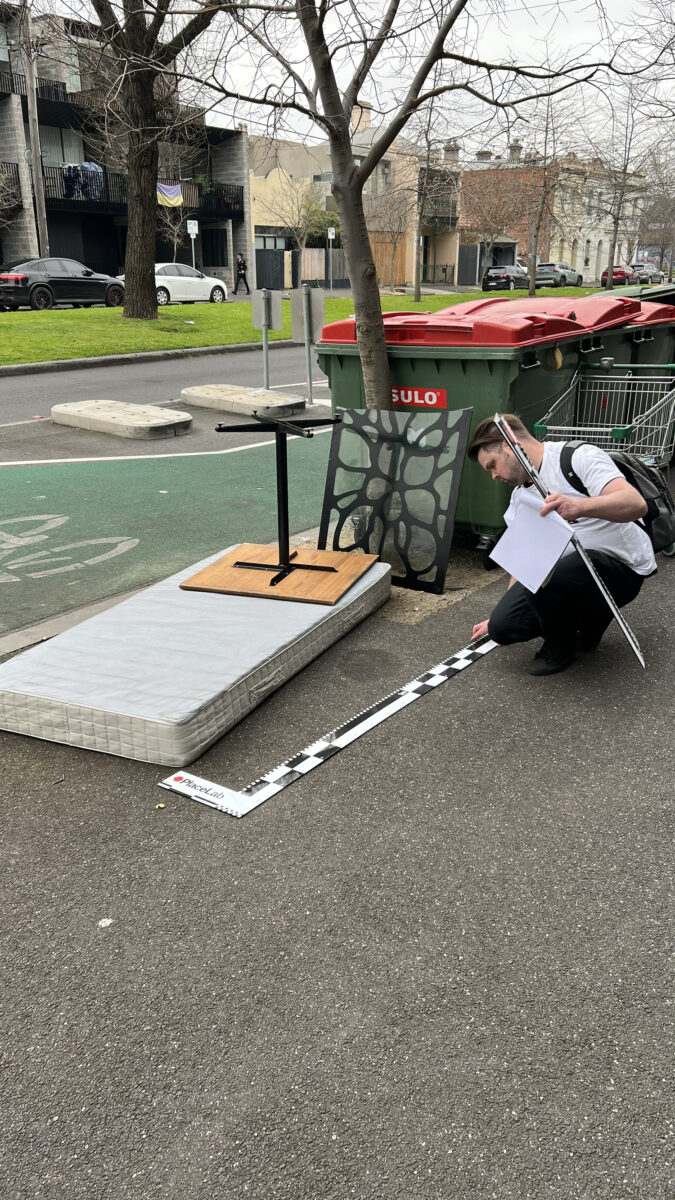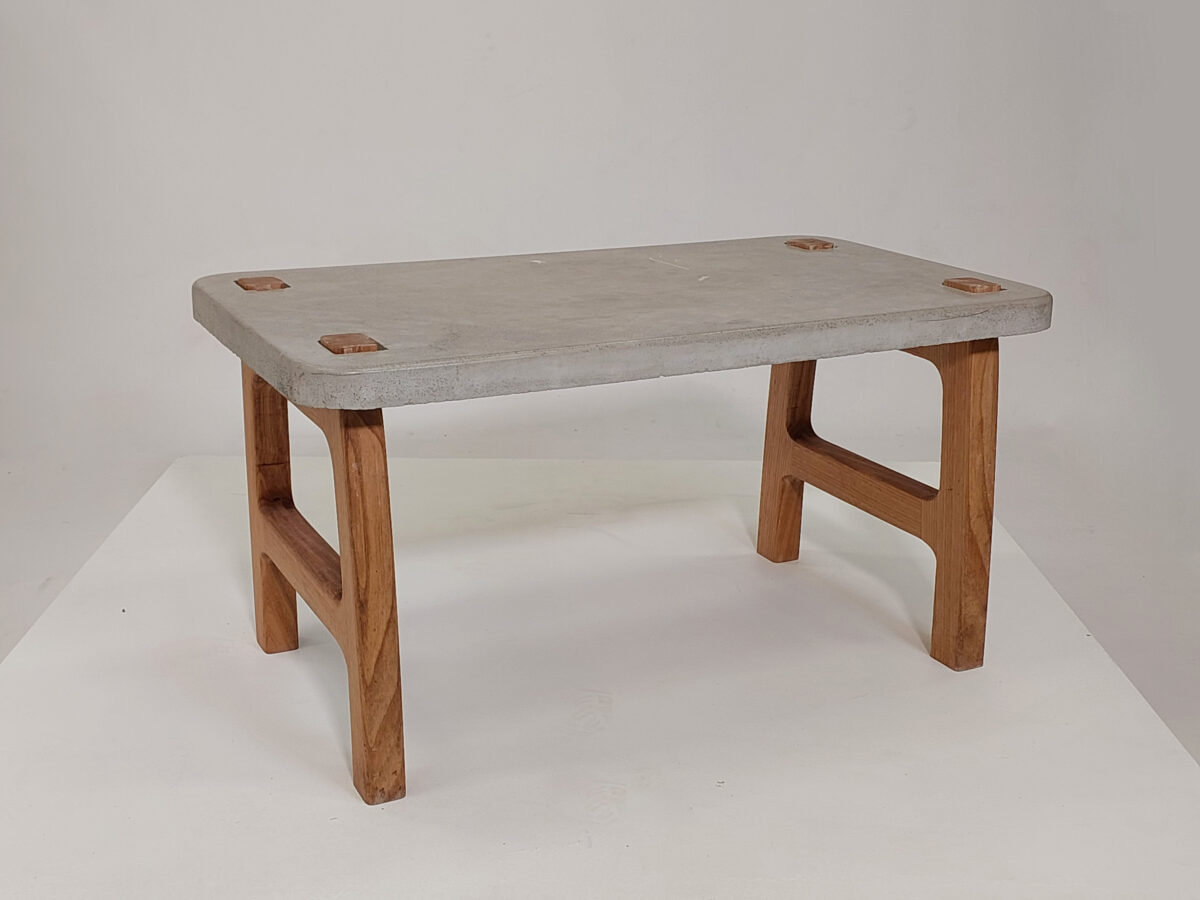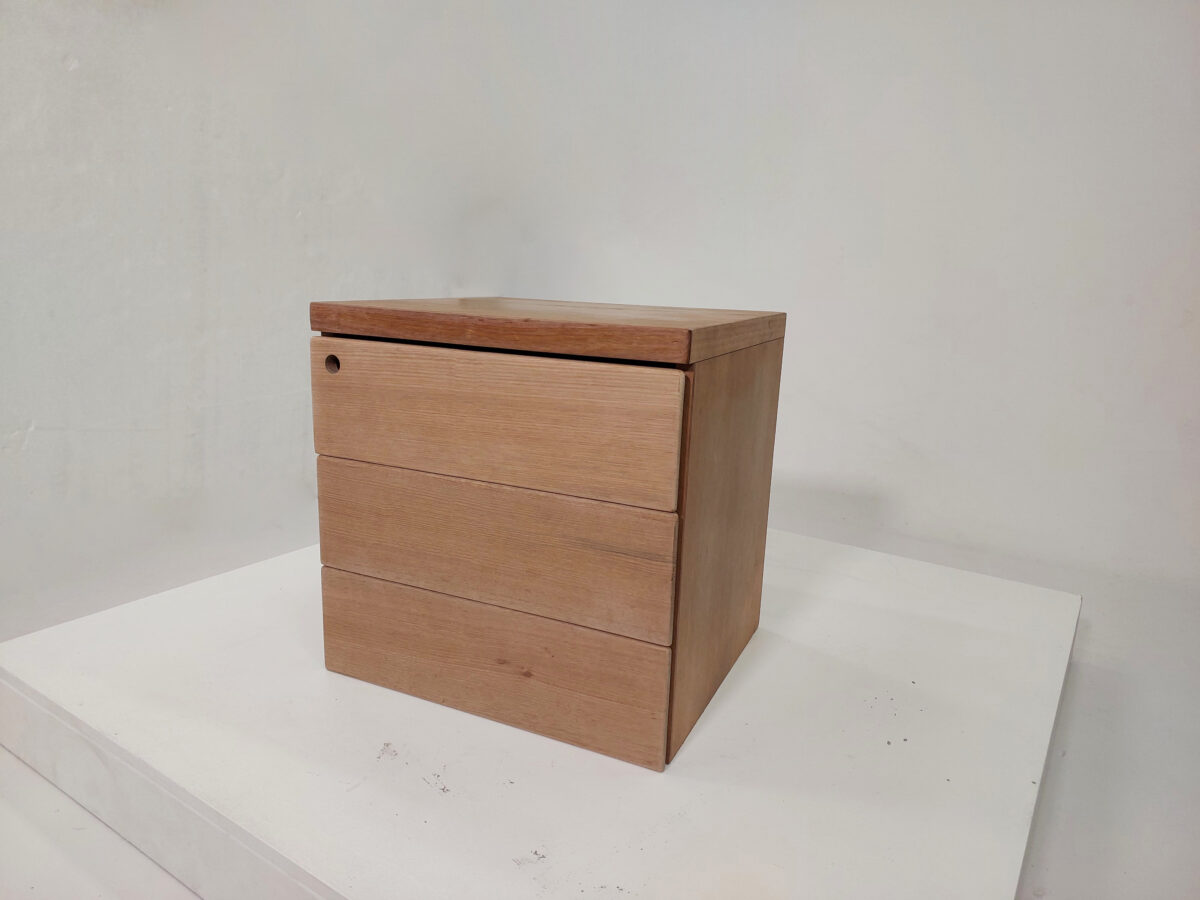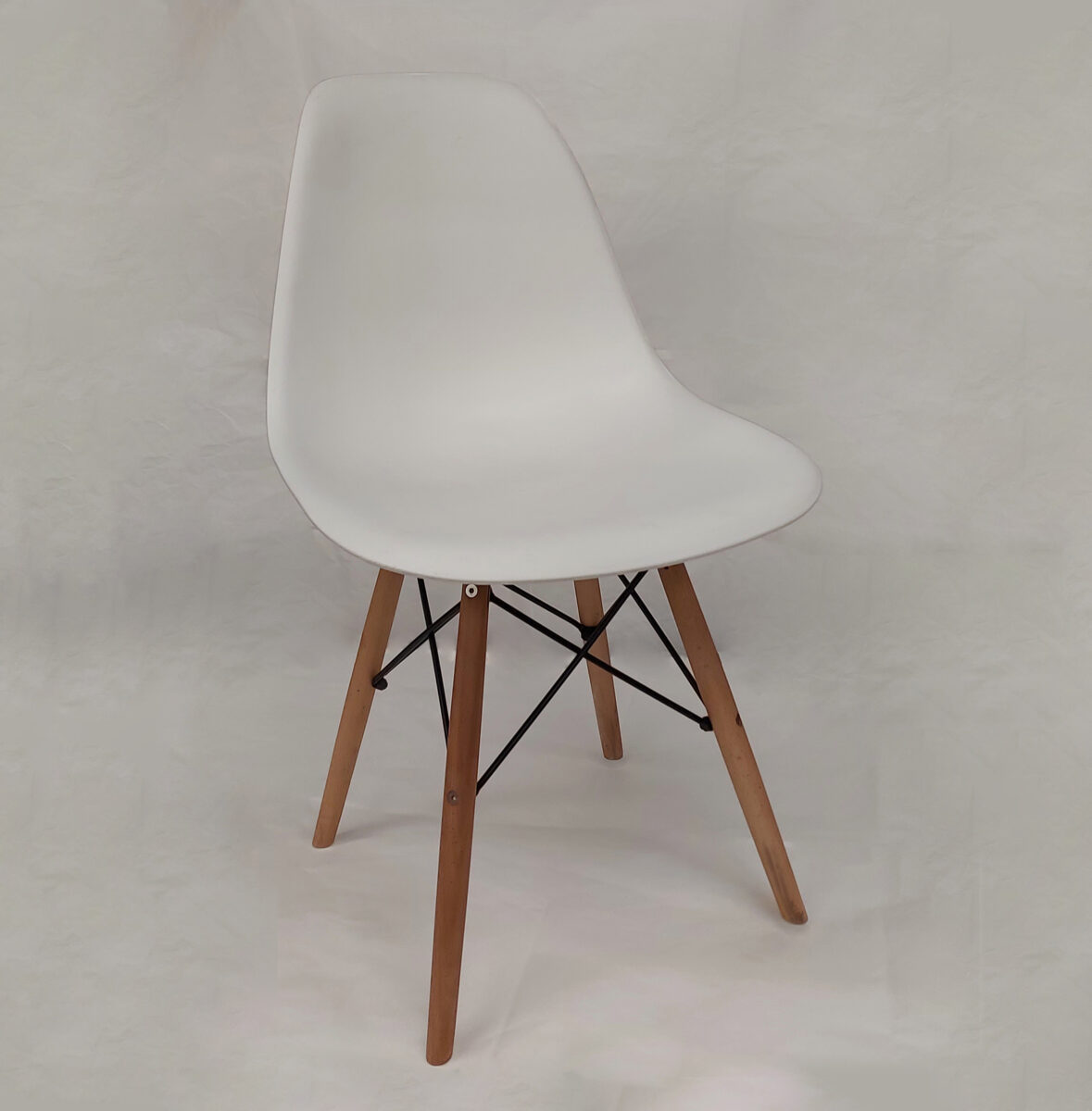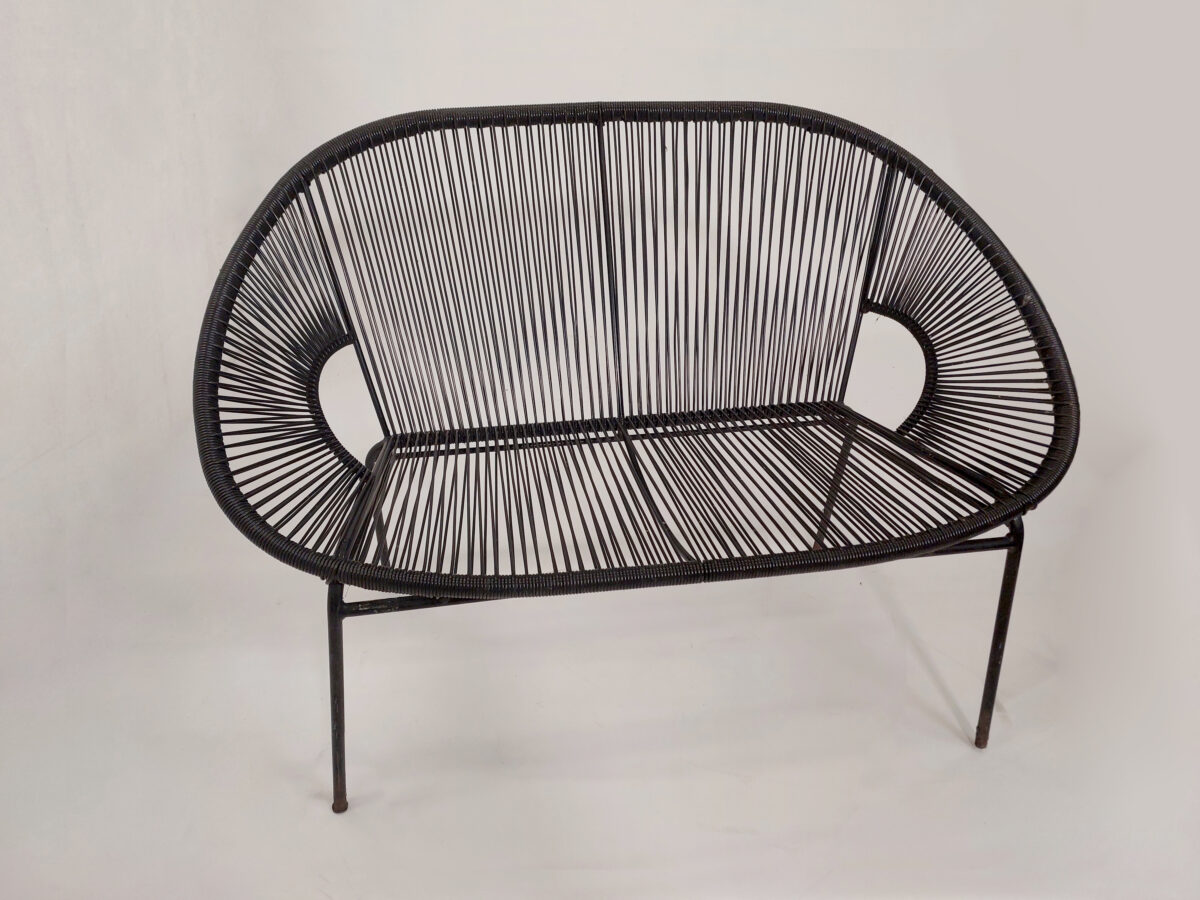PlaceLab Melbourne Cycle 02 — The Wrap Up!
As we bring our second research cycle to a close at RMIT PlaceLab Melbourne, we’re excited to share this wrap up of our two Cycle 02 research projects: ‘Cardigan Commons’ and ‘Flatpack: Repacked’. In this journey over the last 6 months, we’ve explored the visions and aspirations of Cardigan Street’s future within local communities, and we’ve examined the relationship between City of Melbourne residents and their furniture to discover pathways to reduce furniture hard rubbish. Our intention has been to use research activities and community events to promote environmental design and circular economy principles for a thriving future.
These short, sharp, and actionable research projects have culminated in a joint exhibition and the launch of our ‘Zine’ reports at our Melbourne studio.
Trash as Treasure, our ‘Flatpack: Repacked’ Zine, was introduced with a Floor Talk featuring City of Melbourne representatives, discussing furniture waste and the circular economy. Additionally, Wild Streets, our ‘Cardigan Commons’ Zine was launched alongside a Planting Workshop of on-street planter boxes led by our Landscape Architecture Academic Collaborators and the Singapore-based design studio Salad Dressing.
Thank you to Crowd Productions for supporting the build of our exhibitions with their ‘modular framing system’. We also want to thank the Gossard Workshop team for helping build the planter boxes.
Visitors at the PlaceLab Melbourne Exhibit. Photos by Suzanne Phoenix.
The Planter Boxes Workshop. Photos by Suzanne Phoenix.
‘Cardigan Commons’
As part of RMIT’s City North Social Innovation Precinct, which seeks to revitalise this area opportunely located at the fringes of Melbourne CBD, Cardigan Street stands at a pivotal moment for reimagining its urban landscape. This research is a pre-emptive move to gather and understand communities’ perspectives on revitalising the Street, including potential barriers, ways to connect to nature, and strategies to collaborate on street design processes.
Our PlaceLab team engaged with the local community and key stakeholders through three research activities, as well as involvement with academic collaboration, to delve into what could it look like to transform Cardigan Street into an innovative green space that enhances local ecology, environmental health, and community wellbeing.

Cardigan Commons diagram. Photo by RMIT PlaceLab.
Our research activities tackled a complex problem from multiple angles, both looking to understand the challenges, and trial solutions. In this way, ‘Cardigan Commons’ is perhaps three projects in one, with a common goal of finding pathways towards greening and revitalising Cardigan Street, and potentially other soon-to-be urban open spaces.
1. Surveys
We asked about people’s perceptions of Cardigan Street now, and what their wildest dreams for its future might be. We know that Cardigan Street is generally perceived as the safe, green, and quiet north-south connection, and that the community is keen for greening on Cardigan Street! Addressing concerns such as parking and safety (of people and wildlife) will be key for any next steps.
Cardigan Street. Photos by Dijana Risteska.
2. Wild Nights
We also sought to understand the impact of educational events on perceptions of urban nature. We paired expert talks on urban nature with hands-on experiences and invited the community to take part. These included a wildlife experience with real-life urban species, a botanical drawing class focused on eucalypts, and a watercolour workshop painting microbats. From these nights we learnt that interactive nature events can have a profound effect on perceptions and understanding of urban nature. They can also lift people’s spirits and inspire them to nurture the nature around them.
The Wild Nights Event Series. Photos by Emily Brigid Short.
3. Co-Lab for Cardigan
Given the multiple desires, interests, and barriers involved in shaping urban landscapes, as well as the space constraints in the public realm, our challenge was to represent diverse viewpoints and unveil pathways of the street’s future before we walk them. For this, we created the ‘Codesign Toolkit’; a creative community engagement methodology for envisioning the commons; and our workshop ‘Co-Lab for Cardigan’ was our chance to test the kit out. As a result, we created different maps that give qualitative and quantitative data to inform initial concept designs that may be useful in a strategic community engagement process.
Co-Lab for Cardigan. Photos by Dijana Risteska.
4. Academic Collaboration
We engaged with RMIT Landscape Architecture academics from the School of Architecture and Urban Design — Maud Cassaignau, Heike Rahmann, Brent Greene — as well as Yu Han Go from Salad Dressing. Within a series of learning and teaching based Design Studios, students came up with innovative designs for what a future Cardigan Street could look like. For the Exhibition Launch, the students’ work was then presented to complement the results of the ‘Cardigan Commons’ research. Additionally, we collaboratively developed and built four on-street planter boxes that create environments for four different more-than-human species.
Each forest is dedicated to an animal, from arboreal to underground: swift parrot (the only migratory parrot that flies to Melbourne for nectar during winter) butterflies (whose ugly babies are always being neglected), white’s skink (the most adapted urban dweller), and the bandicoot (the soil engineer).
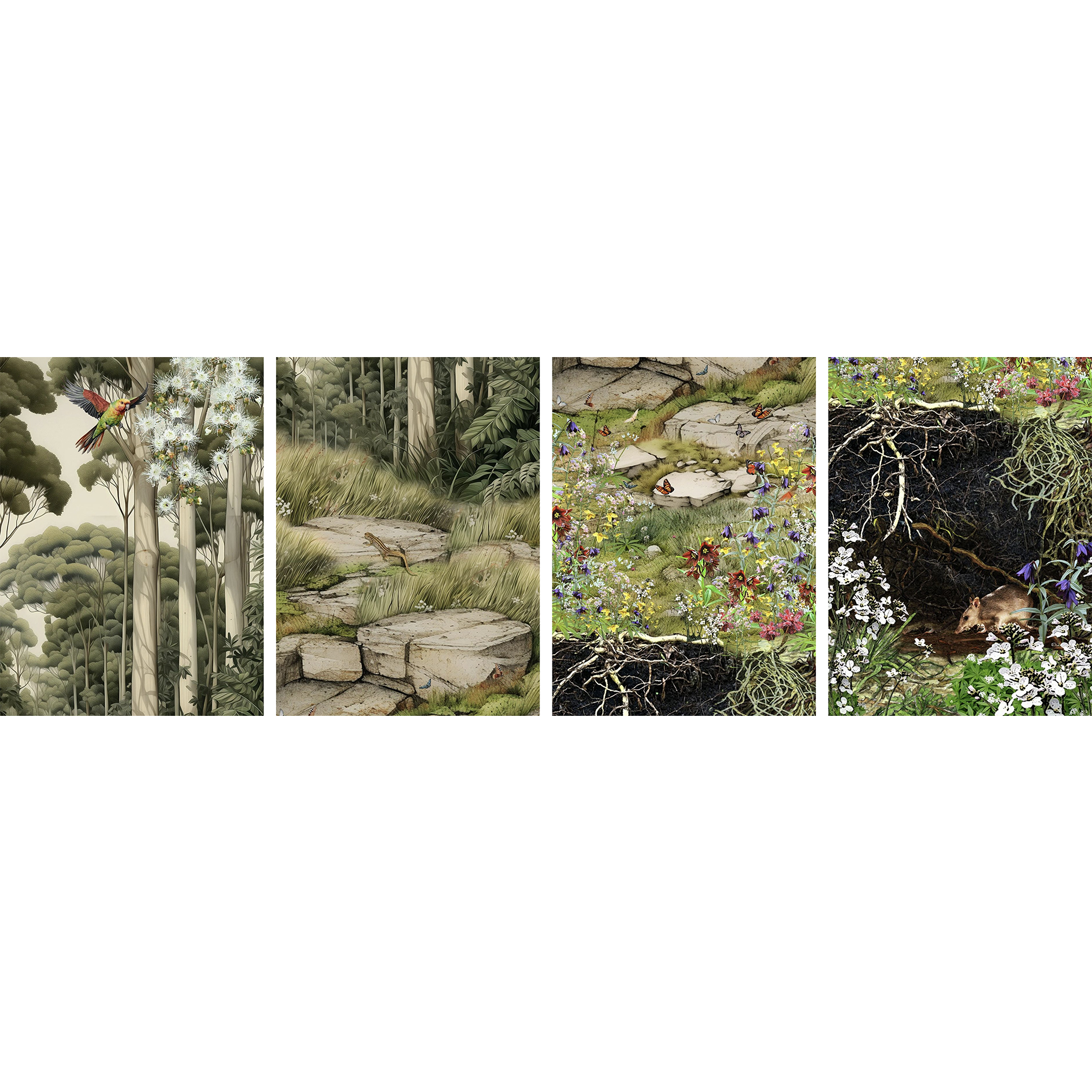
The environments for the more-than-human-species. Photo by RMIT PlaceLab.
To activate the planter boxes, Salad Dressing and the RMIT academics delivered a Community Planting Workshop to showcase what an urban greening tactic could look like for Cardigan Street.
What Next?
We hope that this work will help to create a community of people interested and engaged with the future of Cardigan Street, to serve as a starting point for envisioning the street, and, to create forward momentum toward a brighter, greener, cooler, and happier future.
‘Flatpack: Repacked’
 The disposal of hard rubbish in the City of Melbourne has witnessed a significant surge in recent years, increasing from 230 tonnes in 2009-10 to 940 tonnes in 2016-17. This escalation can be attributed, in part, to ‘fast furniture’, a trend that has led to a proliferation of furniture items made of cheap materials that quickly become hard rubbish. RMIT PlaceLab’s ‘Flatpack: Repacked’ Research Project addressed this issue by investigating how residents of the City of Melbourne furnish their homes, the opportunities to minimise waste, and the potential to rethink furniture lifecycles.
Utilising a circular economy framework, we used an online survey, interviews, and a field study to narrow in on potential short- and long-term interventions to help reduce furniture waste in the city. Unlike a traditional linear economy that follows a ‘take, make, dispose’ approach to products, a circular economy aims to close the loop of life cycles by encouraging interventions that involve the continuous use, recycling, and regeneration of materials. For this project we focused on three R’s — Refuse, Reuse, and Repair.Â
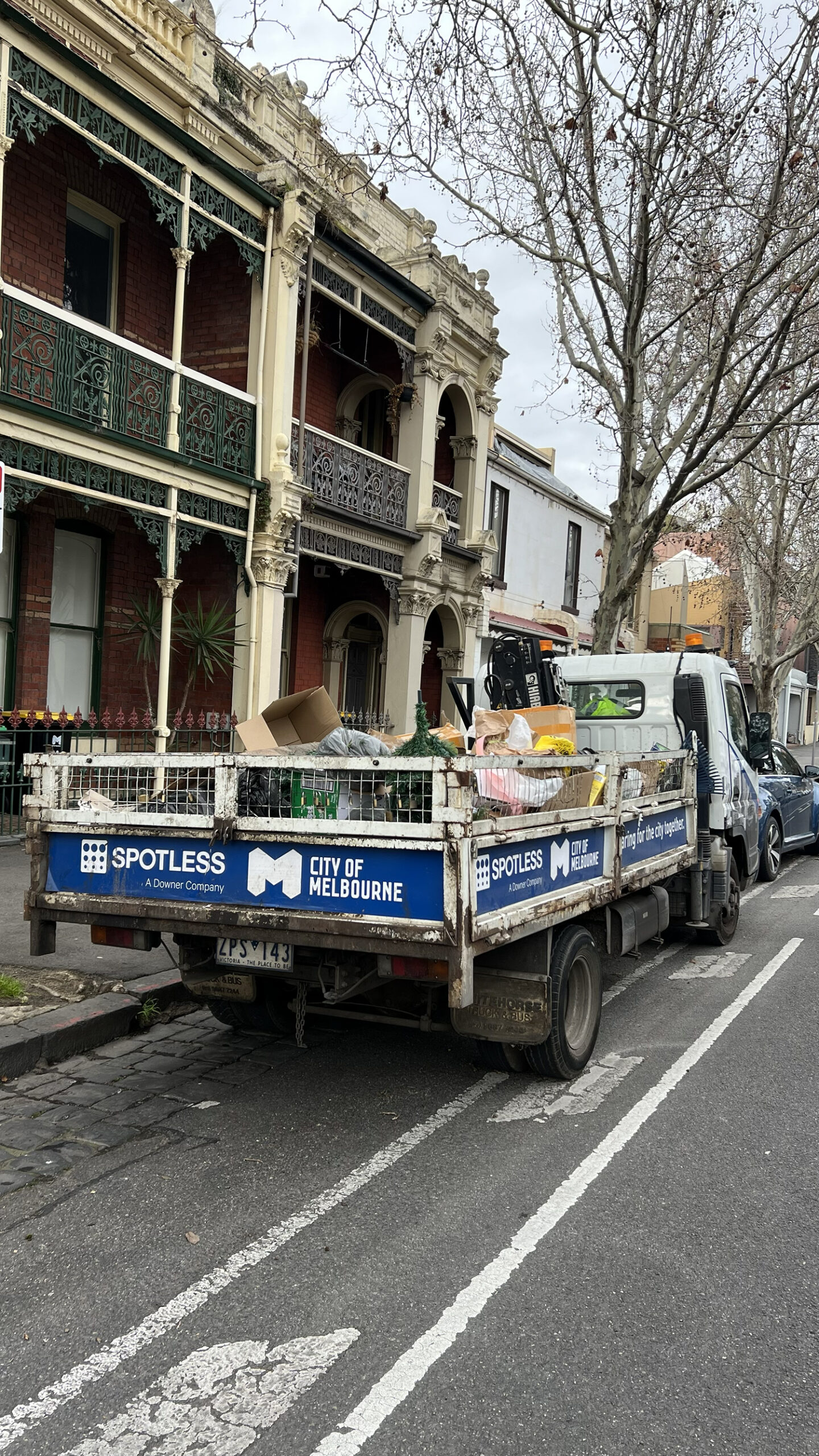
City of Melbourne rubbish disposal. Photo by RMIT PlaceLab.
1. Online Survey
Completed by 115 City of Melbourne residents, the ‘Flatpack: Repacked’ Survey examined participants’ experiences and motivations when acquiring, maintaining, and disposing of furniture. The data painted an interwoven picture of priorities and preferences. It showed that functionality and durability are important when it comes to acquiring furniture; that respondents do repair furniture when needed (or are willing to repair if they can acquire the skills and/or tools); and that methods for transporting furniture are a key concern.
2. Interviews
With 13 interview participants recruited from the survey sample, we examined the survey’s themes in further detail, finding a range experiences with and perspectives on furniture. Our results highlight the attachment some individuals have to their furniture, that respondents think carefully about their waste and see hard rubbish as a last resort, and that there is a collective desire for sustainable outcomes.
3. Field Study
RMIT PlaceLab’s home suburb of Carlton was chosen to document the scale of the hard rubbish issue. Across four designated collection days, we quantified the issue of hard rubbish in Carlton, paying particular attention to furniture items. We found a total of 34 hard rubbish piles, with 73 furniture items included, making up a total volume of 100.2 m3.
The Field Study conducted across Melbourne. Photo: RMIT PlaceLab.
4. Furniture Repair and Exhibition
With help from RMIT’s College of Vocation Education Furniture Design students, furniture items we collected from hard rubbish during the Field Study were repaired, taking them from trash to treasure! At the RMIT PlaceLab Melbourne Exhibition, visitors could put their name down to go in the draw to win one of these pieces and give them a new home.
The repaired furniture. Photo: RMIT PlaceLab.
What Next?
These findings highlight a population that is engaged in sustainable practices and reveal possible avenues to help reduce furniture waste. Our recommendations include providing newcomers to Melbourne with a guide on what not to buy (refuse), a sticker system to show hard rubbish items that are in good condition (reuse) and setting up more repair cafes to assist in furniture repair (repair).
On an individual level, we hope this research helps others to think more about the value of hardy materials, their existing furniture pieces, and the treasure that might be found within ‘trash’.
Next time…
Your furniture breaks —
See if you can repair it either using your own skills, online tutorials, or by going to a repair cafe
You go shopping —
Buy only what you will really use, so that your new furniture doesn’t end up in next year’s hard rubbish pile
You no longer need a furniture piece —
See if you can gift it, or put it up online for free or for sale, before deciding to throw it out
You buy furniture —
Think about the longevity of the piece, and whether you might be able to get similar quality second-hand
